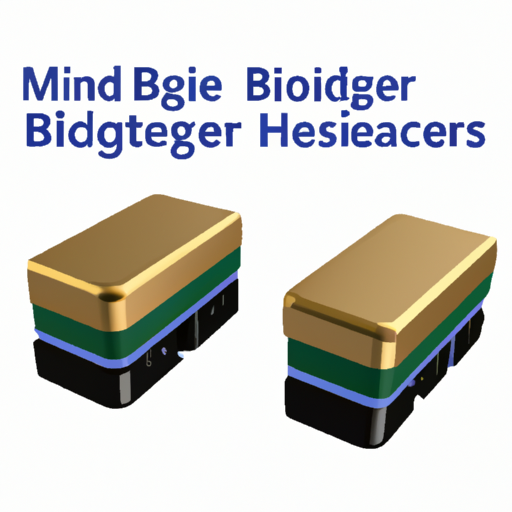Overview of MM74HC241N and Bridge Rectifiers
MM74HC241N is a high-speed CMOS octal buffer/driver with 3-state outputs, primarily used in digital circuits for signal buffering and driving capabilities. While it is not a bridge rectifier, it can complement bridge rectifiers in applications where signal integrity and control are essential.

Bridge Rectifiers are critical components in power electronics, converting alternating current (AC) to direct current (DC). They consist of four diodes arranged in a bridge configuration, allowing current to flow in one direction regardless of the input polarity. This functionality is vital in power supply circuits, battery chargers, and various electronic devices.
Core Functional Technology of Bridge Rectifiers
1. Diode Configuration: The bridge rectifier's four diodes are arranged in a bridge configuration, enabling the use of both halves of the AC waveform, effectively doubling the output voltage.
2. Full-Wave Rectification: By utilizing both halves of the AC cycle, bridge rectifiers provide full-wave rectification, resulting in a smoother DC output compared to half-wave rectifiers.
3. Voltage Drop: The output voltage of a bridge rectifier is typically lower than the input AC voltage due to the forward voltage drop across the diodes. This drop is a critical consideration in design, as it affects the overall efficiency.
4. Filtering: After rectification, the output often requires filtering (using capacitors) to smooth the DC output, reducing ripple voltage and improving performance in power supply applications.
5. Heat Management: Diodes in a bridge rectifier can generate heat during operation, especially under high load conditions. Proper heat sinking and thermal management are essential for reliability and longevity.
Application Development Cases
| 1. Power Supply Units (PSUs) | |
| 2. Battery Chargers | |
| 3. Solar Inverters | |
| 4. Motor Control Circuits | |
| 5. LED Drivers | |
Conclusion
Bridge rectifiers are essential in various electronic applications, efficiently converting AC to DC. Their design and implementation are crucial for ensuring reliable performance in power supplies, battery chargers, solar inverters, motor control circuits, and LED drivers. Understanding the core functional technology and application development cases of bridge rectifiers enables engineers to create more effective and efficient electronic systems.
For specific designs and implementations, engineers often refer to datasheets, application notes, and case studies from manufacturers to optimize their designs for performance, efficiency, and reliability. This knowledge is vital for developing innovative solutions in the ever-evolving field of electronics.
Overview of MM74HC241N and Bridge Rectifiers
MM74HC241N is a high-speed CMOS octal buffer/driver with 3-state outputs, primarily used in digital circuits for signal buffering and driving capabilities. While it is not a bridge rectifier, it can complement bridge rectifiers in applications where signal integrity and control are essential.

Bridge Rectifiers are critical components in power electronics, converting alternating current (AC) to direct current (DC). They consist of four diodes arranged in a bridge configuration, allowing current to flow in one direction regardless of the input polarity. This functionality is vital in power supply circuits, battery chargers, and various electronic devices.
Core Functional Technology of Bridge Rectifiers
1. Diode Configuration: The bridge rectifier's four diodes are arranged in a bridge configuration, enabling the use of both halves of the AC waveform, effectively doubling the output voltage.
2. Full-Wave Rectification: By utilizing both halves of the AC cycle, bridge rectifiers provide full-wave rectification, resulting in a smoother DC output compared to half-wave rectifiers.
3. Voltage Drop: The output voltage of a bridge rectifier is typically lower than the input AC voltage due to the forward voltage drop across the diodes. This drop is a critical consideration in design, as it affects the overall efficiency.
4. Filtering: After rectification, the output often requires filtering (using capacitors) to smooth the DC output, reducing ripple voltage and improving performance in power supply applications.
5. Heat Management: Diodes in a bridge rectifier can generate heat during operation, especially under high load conditions. Proper heat sinking and thermal management are essential for reliability and longevity.
Application Development Cases
| 1. Power Supply Units (PSUs) | |
| 2. Battery Chargers | |
| 3. Solar Inverters | |
| 4. Motor Control Circuits | |
| 5. LED Drivers | |
Conclusion
Bridge rectifiers are essential in various electronic applications, efficiently converting AC to DC. Their design and implementation are crucial for ensuring reliable performance in power supplies, battery chargers, solar inverters, motor control circuits, and LED drivers. Understanding the core functional technology and application development cases of bridge rectifiers enables engineers to create more effective and efficient electronic systems.
For specific designs and implementations, engineers often refer to datasheets, application notes, and case studies from manufacturers to optimize their designs for performance, efficiency, and reliability. This knowledge is vital for developing innovative solutions in the ever-evolving field of electronics.






